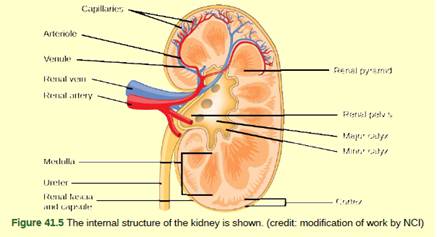
Figure 41.5 Which of the following statements about the kidney is false?
- The renal pelvis drains into the ureter.

Introduction:
In the body, kidneys are found as the pair of bear-shaped structure which are found below the liver in the peritoneal cavity. These bots structures play the functions of the major excretory system as it undergoes the ultrafiltration of the blood.
Answer to Problem 1VCQ
Correct answer:
The correct answer is option (c) The cortex covers the capsule.
Explanation of Solution
Explanation/justification for the correct answer:
Option(c) The cortex covers the capsule. Renal cortex is found as the outer region of the kidney which is formed by the outer extensions of cortical tissue. It is found as the outer portion present between the renal capsule and renal medulla. So it does not found as the covering of capsule only.
Explanation for incorrect answer:
Option (a). Renal pelvis drains into the ureter. The renal pelvis is found as the inner region of the kidney that enters into the ureter which is present outside the kidney. So, this is an incorrect option.
Option (b) Renal pyramids are in the medulla. Renal Medulla is found at the medial region of the kidney which contains many renal pyramids. These pyramids are found as the pyramidal masses of tissues. So, this is an incorrect answer.
Option (d) Nephrons are in the renal cortex. The renal cortex contains the millions of structure and functional unit of the kidney known as nephrons.
Renal cortex is found as the outer region other of the kidney which is formed by the outer extensions of cortical tissue. Hence, the correct answer in s an option (c) The cortex covers the capsule.
Want to see more full solutions like this?
Chapter 41 Solutions
Biology 2e
Additional Science Textbook Solutions
Biological Science (6th Edition)
Campbell Biology in Focus (2nd Edition)
Concepts of Genetics (12th Edition)
Biology: Life on Earth (11th Edition)
College Physics: A Strategic Approach (3rd Edition)
Anatomy & Physiology (6th Edition)
- What is behavioral adaptarrow_forward22. Which of the following mutant proteins is expected to have a dominant negative effect when over- expressed in normal cells? a. mutant PI3-kinase that lacks the SH2 domain but retains the kinase function b. mutant Grb2 protein that cannot bind to RTK c. mutant RTK that lacks the extracellular domain d. mutant PDK that has the PH domain but lost the kinase function e. all of the abovearrow_forwardWhat is the label ?arrow_forward
- Can you described the image? Can you explain the question as well their answer and how to get to an answer to an problem like this?arrow_forwardglg 112 mid unit assignment Identifying melting processesarrow_forwardGive only the mode of inheritance consistent with all three pedigrees and only two reasons that support this, nothing more, (it shouldn't take too long)arrow_forward
- Oarrow_forwardDescribe the principle of homeostasis.arrow_forwardExplain how the hormones of the glands listed below travel around the body to target organs and tissues : Pituitary gland Hypothalamus Thyroid Parathyroid Adrenal Pineal Pancreas(islets of langerhans) Gonads (testes and ovaries) Placentaarrow_forward
 Biology 2eBiologyISBN:9781947172517Author:Matthew Douglas, Jung Choi, Mary Ann ClarkPublisher:OpenStax
Biology 2eBiologyISBN:9781947172517Author:Matthew Douglas, Jung Choi, Mary Ann ClarkPublisher:OpenStax Biology (MindTap Course List)BiologyISBN:9781337392938Author:Eldra Solomon, Charles Martin, Diana W. Martin, Linda R. BergPublisher:Cengage Learning
Biology (MindTap Course List)BiologyISBN:9781337392938Author:Eldra Solomon, Charles Martin, Diana W. Martin, Linda R. BergPublisher:Cengage Learning





